The 50 Greatest Moments in Baseball History
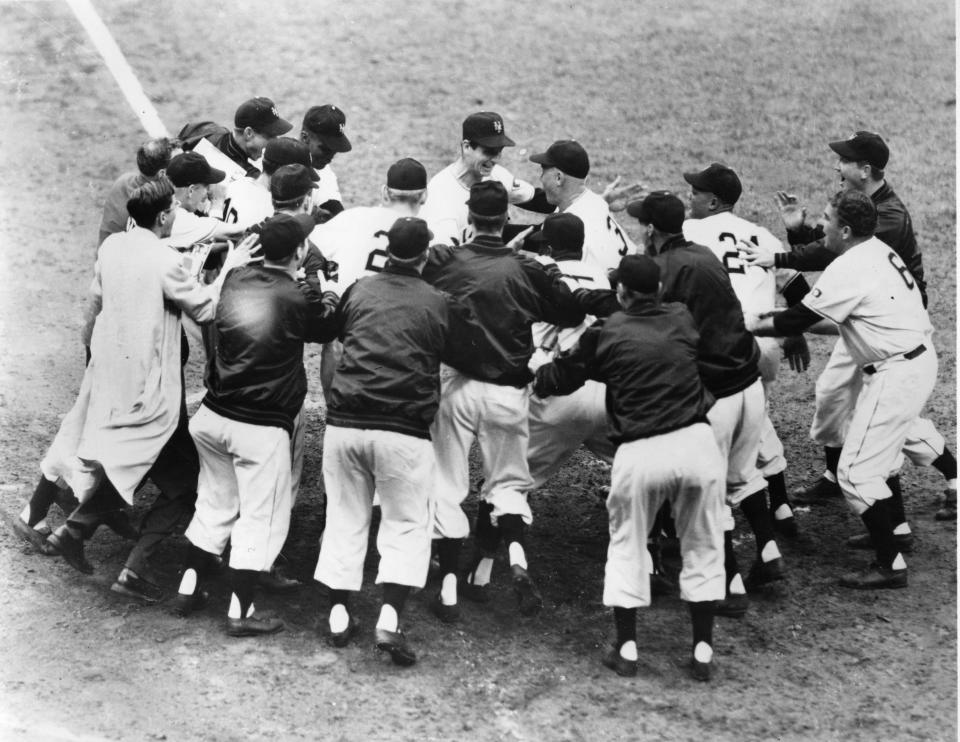
Over the past 150 or so years since baseball was created, there have been too many pitches thrown and balls caught to count. But not all are created equally. According to some of the sport's experts and historians, these are the most amazing and unforgettable moments in baseball history.
(Getty Images)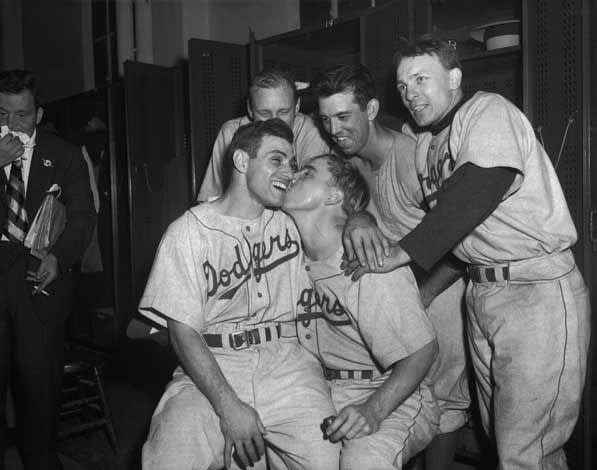
October 3, 1947: Most of the 74,065 fans at Yankee Stadium were there to see the Bronx Bombers (who were at that point leading the Dodgers three games to two in the World Series) clinch another title. But a defensive replacement named Al Gionfriddo gets in the way: With Brooklyn leading, 8-5, in the bottom of the sixth inning and two runners on base, the Yankees' Joe DiMaggio smashes the first pitch he sees into the sky. Gionfriddo races toward the bullpen railing, loses his cap, turns, leaps, and makes the catch just to the left of the 415-foot marker in front of a low metal gate. Nearing second base, Joltin' Joe shakes his head and kicks the dirt in frustration as he gets robbed of a game-tying homer. "It's one of the few times Dimaggio showed emotion on the baseball field," says Harvey Frommer, author of Remembering Fenway Park and The New York Yankee Encyclopedia.
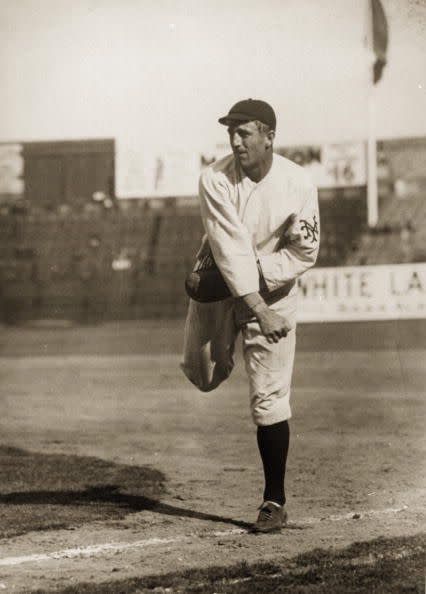
September 23, 1908: Giants' rookie Fred Merkle's failure to touch second base on what appeared to be a game-winning hit against the Cubs resulted in the game ending in a tie, to be made up if necessary. At the end of the season, the Giants and Cubs tied for first place in the National League, and the Cubs won the makeup game to take the National League pennant. "Merkle has gone down in history as one of these great goats, but it wasn't really his fault," said Neil Lanctot, author of three books on baseball, including Campy: The Two Lives of Roy Campanella. "Merkle admitted that he had not touched second base, but said he only left the field after the infield umpire assured him the game was over."
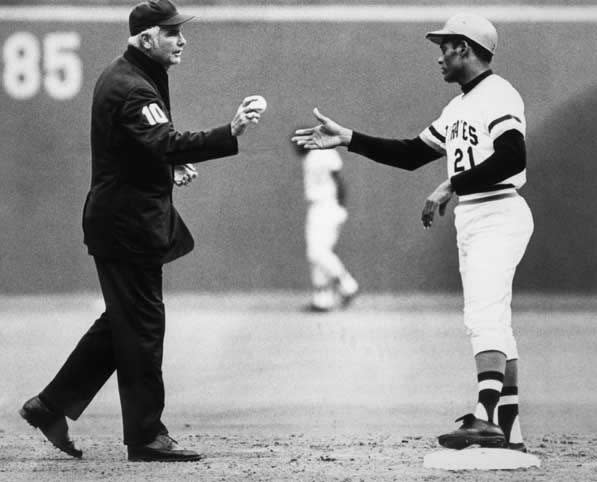
September 30, 1972: Roberto Clemente of the Pittsburgh Pirates, the greatest Latino star of his era, doubles off the Mets' Jon Matlack in the final game of the season. It was his 3,000th career hit—and his last. On New Year's Eve, Clemente died in a plane crash while traveling to aid earthquake victims in Nicaragua. The Hall of Fame waived its five-year-waiting period before induction, and Clemente was elected to the Hall in 1973. "With his induction, Clemente broke through another of baseball's barriers and became the first foreign-born major-leaguer to reach the Hall of Fame," says Joseph Wallace, author of Grand Old Game and The Baseball Anthology.
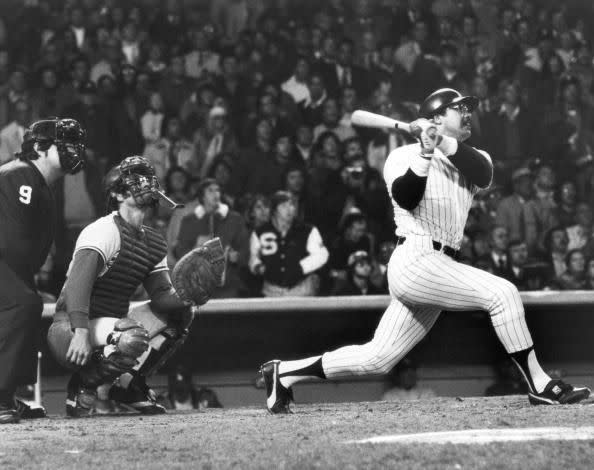
October 18, 1977: "Any moment that can create a nickname is amazing," says Richard Puerzer, a member of the Society for American Baseball Research. It was during Game 6 of the 1977 World Series that Reggie Jackson got his. In the fourth inning, Jackson hit the first pitch he saw from Dodgers starter Burt Hooten into the right field seats. In the fifth, Jackson lined reliever Elias Sosa's first offering to about the same spot. And in the eighth, Jackson smacked Charlie Hough's first pitch, a knuckleball, 475 feet into dead center field.
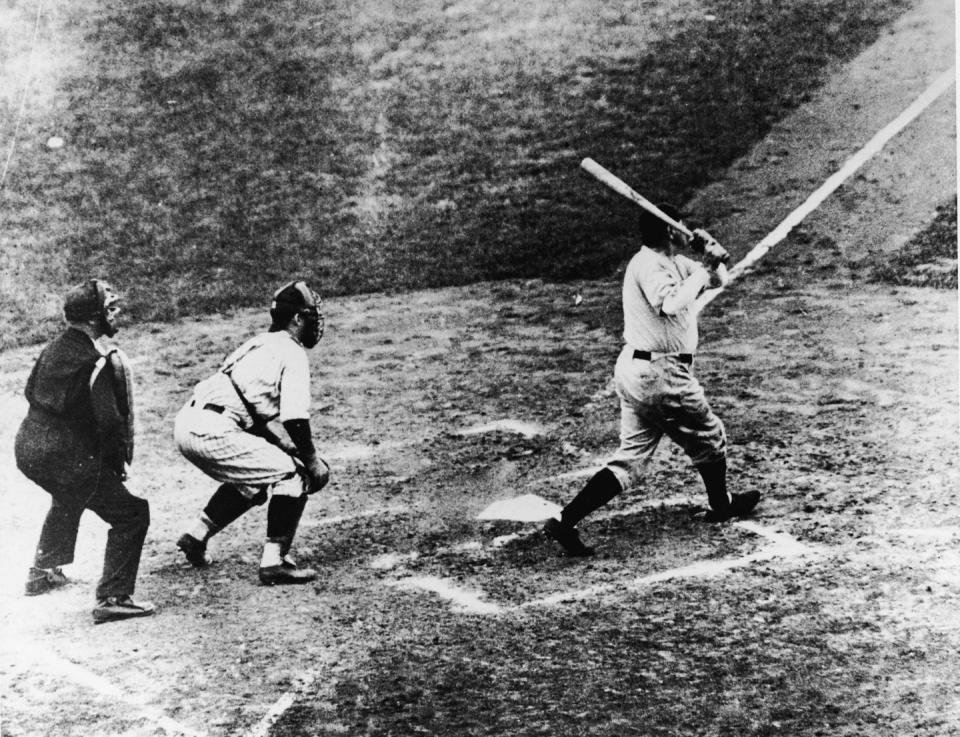
May 6, 1915: A raw but talented young pitcher for the Boston Red Sox, George Herman "Babe" Ruth, slugs a home run off of the New York Yankees' Jack Warhop in New York's Polo Grounds—the first home run of Ruth's major-league career, and the first of 714 for the player who would revolutionize and dominate baseball for the next 20 years. "When Ruth hit 54 home runs in 1920, every other player in the American League combined hit only 315," says Wallace. "Just a few years later, everyone was hitting home runs—the Babe had ushered in the Lively Ball era." As the great sportswriter Damon Runyan put it after the game, "He is now quite a demon pitcher and a demon hitter when he connects."
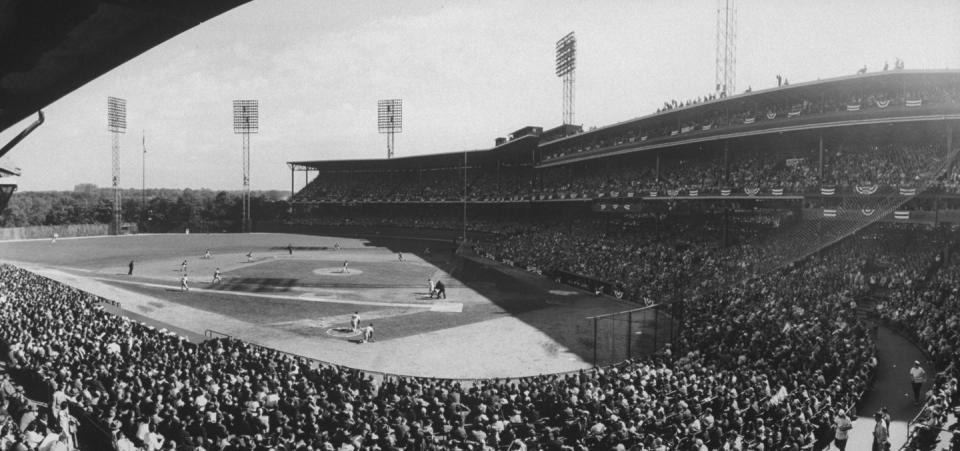
August 6, 1909: Giants outfielder "Red" John Murray makes one of the most spectacular catches in baseball history, as if it were written in a movie script. The Giants and Pirates are tied, 2-2, and the midafternoon sky at Forbes Field in Pittsburgh is pitch-black and filled with ominous storm clouds. Tommy Leach of the Bucs cracks the ball into the dark outfield, and as soon as the shadowy Murray leaps up to grab it with one hand, a flash of lightning illuminates the sky. "It's the most famous catch in the early years of baseball and for good reason," says John Thorn, official historian of Major League Baseball. "You can't cue up lightning unless you're directing The Natural!"
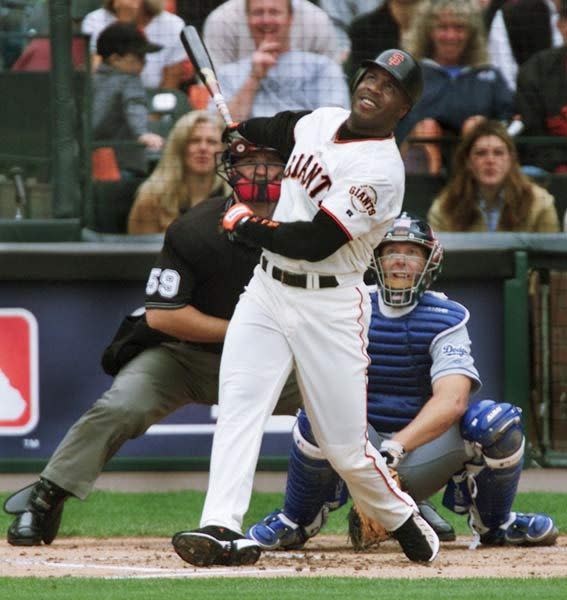
October 7, 2001: Babe Ruth held the single-season home run record for 34 years, Roger Maris for 37. It's been 11 years since Barry Bonds hit No. 73, off Dennis Stringer, on Oct. 7, 2001, and with the collapse of the steroid era, it doesn't look as if anyone will threaten Bonds' record any time soon—except maybe the MLB's rules committee, with one of those dreaded asterisks.
"I was with the Fightin' Fish in Atlanta on the last day of our 2001 season," says MLB Network analyst Kevin Millar. "We had a chance to catch it on highlights after we finished our game. It was pretty amazing. He made the game look like PlayStation."
And while it's hard to remember, Bonds won the first three of his record seven National League MVP awards before the rumblings of steroid use had reached a roar. No less than Bill James, the king of baseball's statistical class, has said that Bonds will go down as one of the five greatest ballplayers of all time.
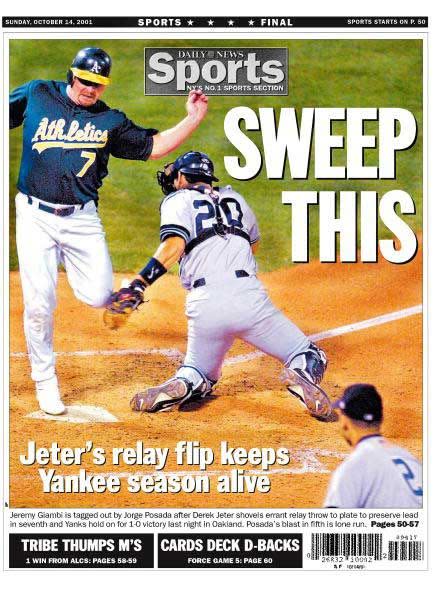
Oct. 13, 2001: Already down two games to the Oakland Athletics in the AL Divisional Series, Yankees captain Derek Jeter makes one of the most athletic plays of his career to propel his team to a game (and series) victory. In the bottom of the 10th, Jeremy Giambi of the A's strokes a two-out single, followed by a line drive from Terrence Long. As the slow-footed Giambi lumbers around the bases, Jeter vacates his shortstop position and runs to the first base line, snaring a throw from outfielder Shane Spencer and making a backhand flip to home plate, barely nailing Giambi. "You're out to win. Baseball, board games. I hate to lose," Jeter told Frommer of the Miracle Flip.
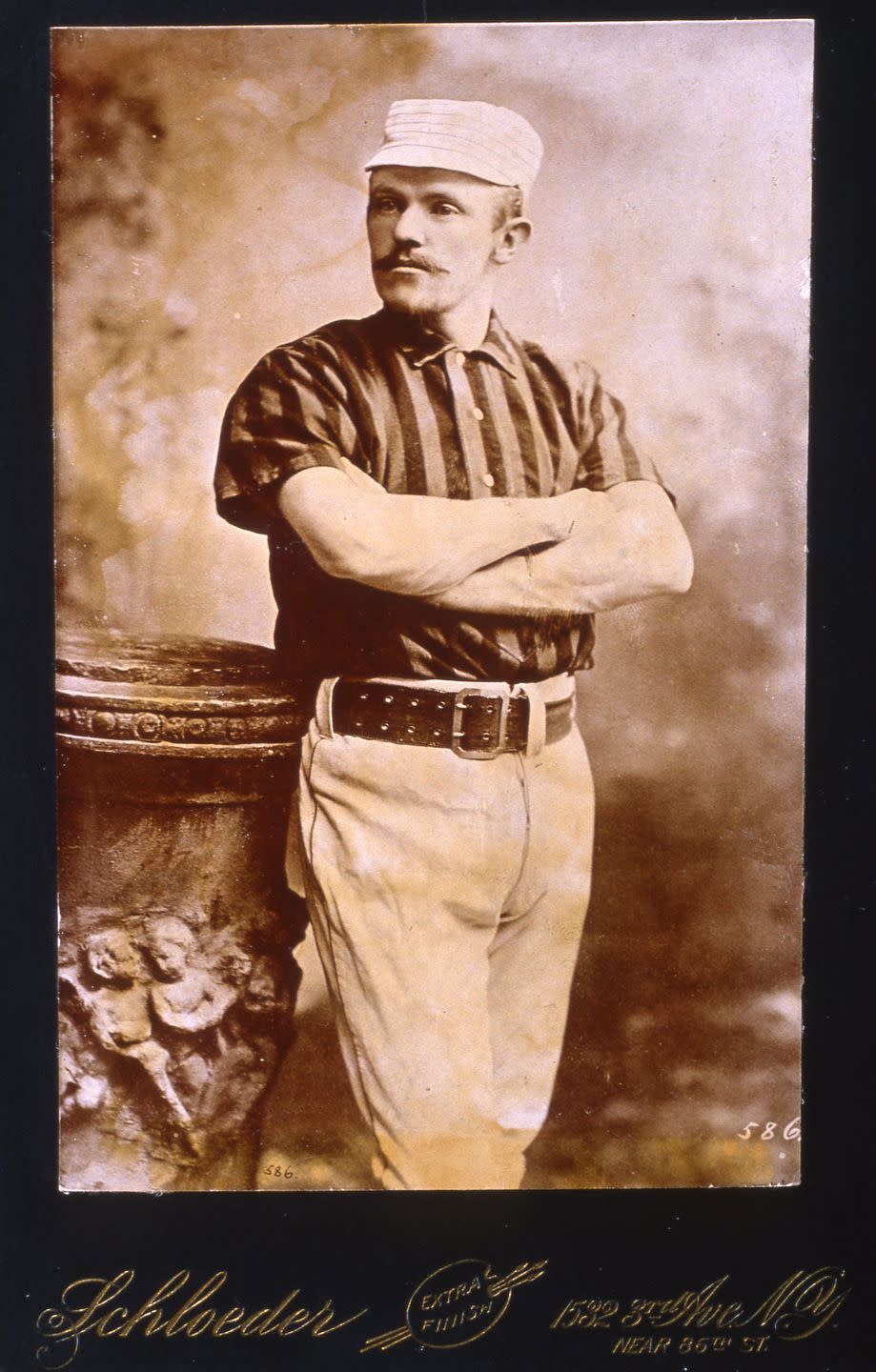
October 25, 1889: Giants shortstop John Ward becomes the original Mr. October with his heroics in Game 6 of the 1889 World Series between the New York Giants and Brooklyn Bridegrooms. With two outs in the bottom of the ninth inning, nobody on base, and a full count on Ward, the Giants are about to fall behind 4 to 2 in the series. But Ward singles to right off Adonis Terry, steals second on Terry's first pitch to Roger Connor, and then third on the next pitch. After scoring the tying run, Ward wins the game in the eleventh with a walk-off single. "Ward singlehandedly snatches victory from the jaws of defeat," says Thorn, "and I don’t think there had ever been anything like it before."
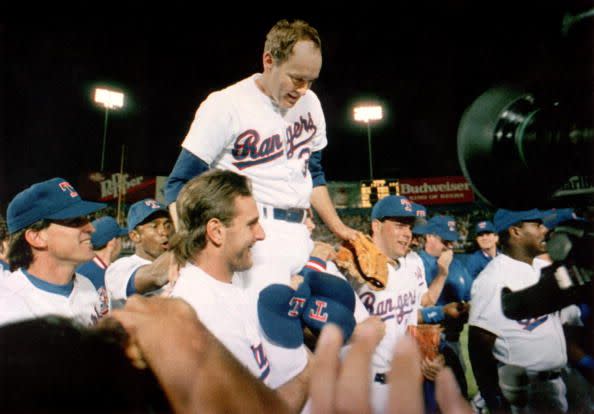
May 1, 1991: At Arlington Stadium, the legendary but badly banged-up Nolan Ryan, age 44, takes the mound for the Texas Rangers against Toronto. After holding the Blue Jays hitless for the first eight and two-thirds innings, Ryan has only Roberto Alamar standing in the way of an unprecedented seventh no-no. With the count at 2-2, Ryan's final pitch starts to the plate and explodes at 93 miles per hour as Alomar swings and misses. Bedlam is on parade at Arlington. Ryan's teammates surge out on the field, lifting him onto their shoulders. "My teammates were excited for me and involved in it," the righty told Harvey Frommer, author of Ryan's biography Throwing Heat, "and the fans rallied."
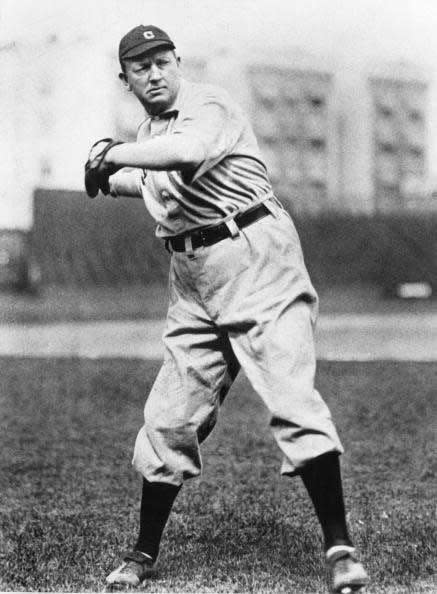
September 22, 1911: Cy Young wins the 511th and final game of his extraordinary pitching career, which began in 1890. Many baseball records are likely to be broken someday, but Young's, for most career victories, will last forever. Year after year, Young started more than 40 games, while today's pitchers rarely start much over 30. Then he would almost always pitch a complete game, gaining either a win or loss nearly every time out. (His seasons boasted records like 27-22, 36-12, and 33-10.) "A pitcher today could average 20 wins a year for 25 years," says Wallace, "and still have to find 12 extra wins to break the record."
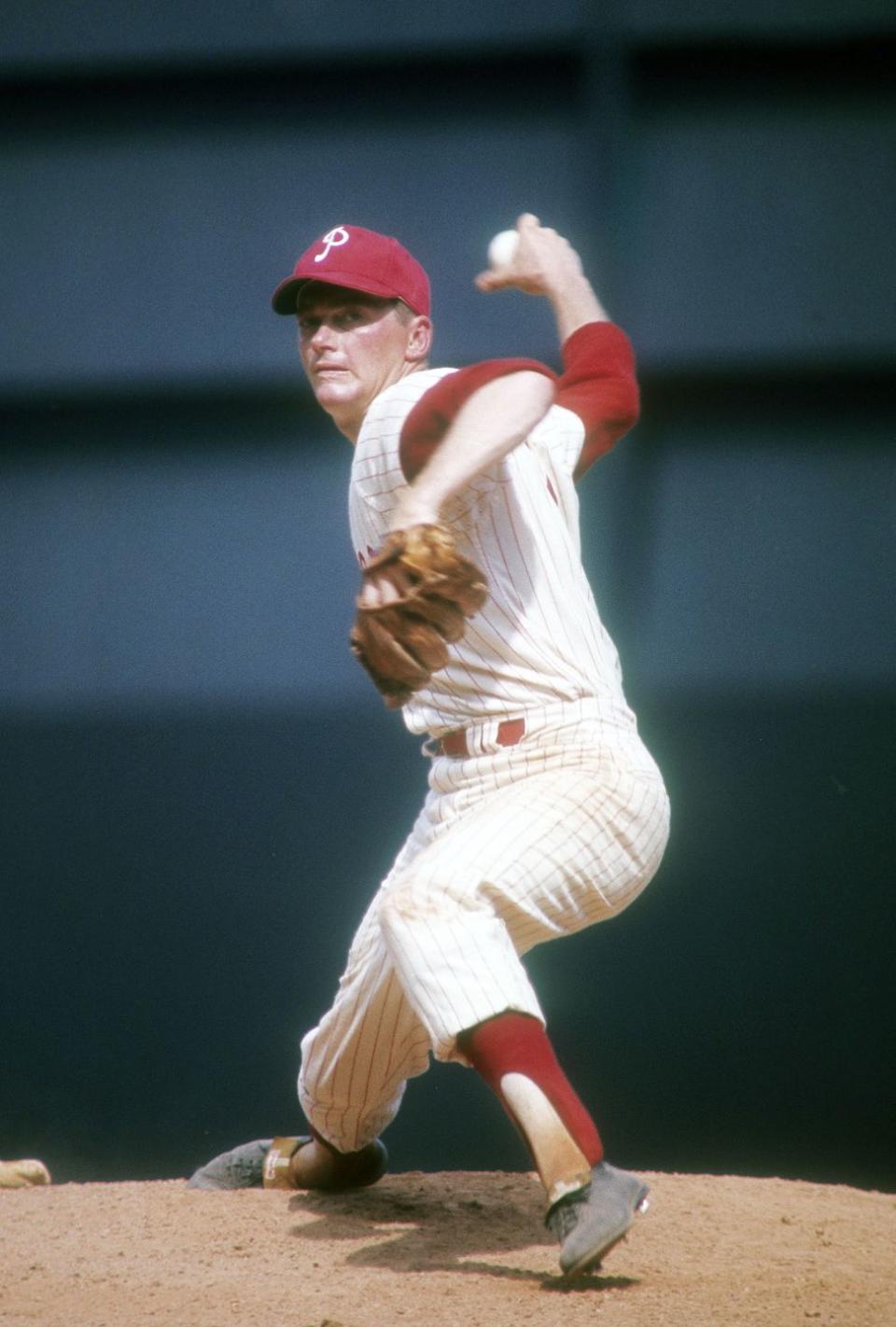
June 21, 1964: In the first game of a Father's Day doubleheader at Shea Stadium, Jim Bunning of the National League-leading Phillies pitches a perfect game, defeating the 10th-place New York Mets. It's only the fifth perfect game in baseball history, and the ace right-hander needs just 90 pitches to complete the game. With the 27-up, 27-down victory, Bunning becomes the first player to hurl a no-hitter in both leagues. (He also blanked the Red Sox in 1958 while pitching for the Detroit Tigers.) "What a day for the daddy of seven children who experienced a career game that Father's Day," says Frommer.
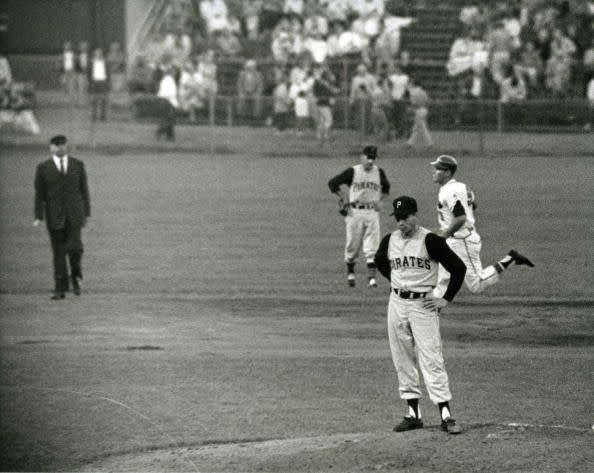
May 26, 1959: Pittsburgh's Harvey Haddix pitched the greatest game of all time—and lost. Haddix threw 12 perfect innings against the Milwaukee Braves, only to see his team fail to score. In the bottom of the twelfth the Braves' Felix Mantilla reached on an error by third baseman Don Hoak, ending the perfect game. Three batters later, first baseman Joe Adcock drove in Mantilla with his team's only hit—a home run to deep center field that was later ruled a double. "Considering that this has never been repeated, it is an amazing event," says Puerzer.
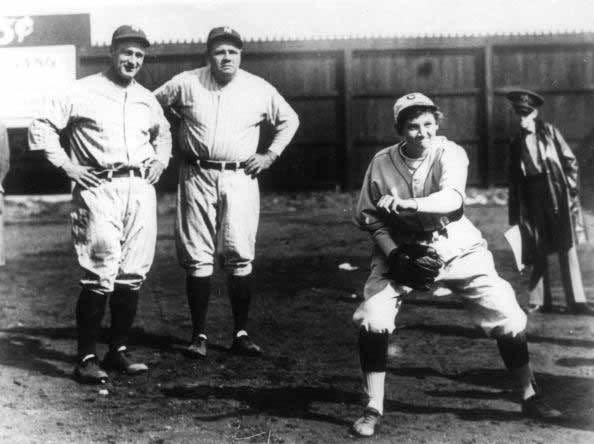
April 2, 1931: Seventeen-year-old Jackie Mitchell, a pitcher for the minor-league Chattanooga Lookouts, struck out Babe Ruth and Lou Gehrig on a total of seven pitches in an exhibition game. "What made the event noteworthy is that Mitchell was a girl playing on a man's team," says Joseph Wallace, author of Diamond Ruby, a novel inspired by Jackie Mitchell's story, "a widely publicized feat that came to an end just a few days later when Mitchell—and all women—were banned from playing on men's professional teams."
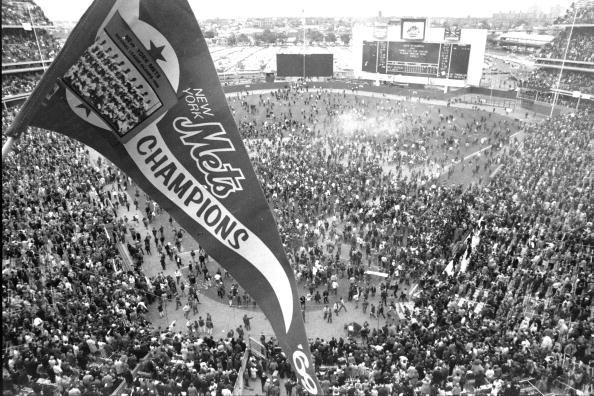
October 16th, 1969: Led by a stalwart pitching performance by Jerry Koosman and timely hitting by Donn Clendenon and others, the New York Mets complete their miracle and defeat the powerful Baltimore Orioles, 5-3, in a World-Series-clinching Game 5. "The victory gave the Mets one of the more improbable world championships of all time," says Wallace. "Under the steady leadership of manager Gil Hodges, the team—a laughingstock since their arrival in 1962—captured the imaginations of fans nationwide."
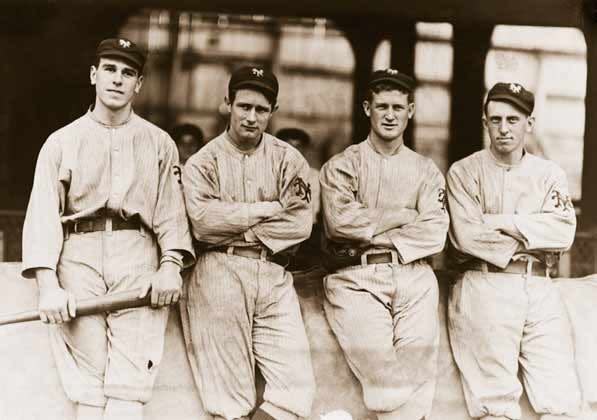
October 16, 1912: In the eighth game of the World Series, the New York Giants have a 3-2 lead going into the 10th inning. Boston's Clyde Engle lofts an easy fly ball in the direction of Giants outfielder Fred Snodgrass, who proceeds to drop it. On the very next play, Snodgrass redeems himself, outrunning a harder hit ball by Harry Hooper and making an unbelievable catch. But Engle scores the tying run and the Sox end up winning the Series. "The catch is completely obliterated by the muff, which illustrates the sad truth in baseball and life that the bad sometimes outweighs the good," says Thorn.
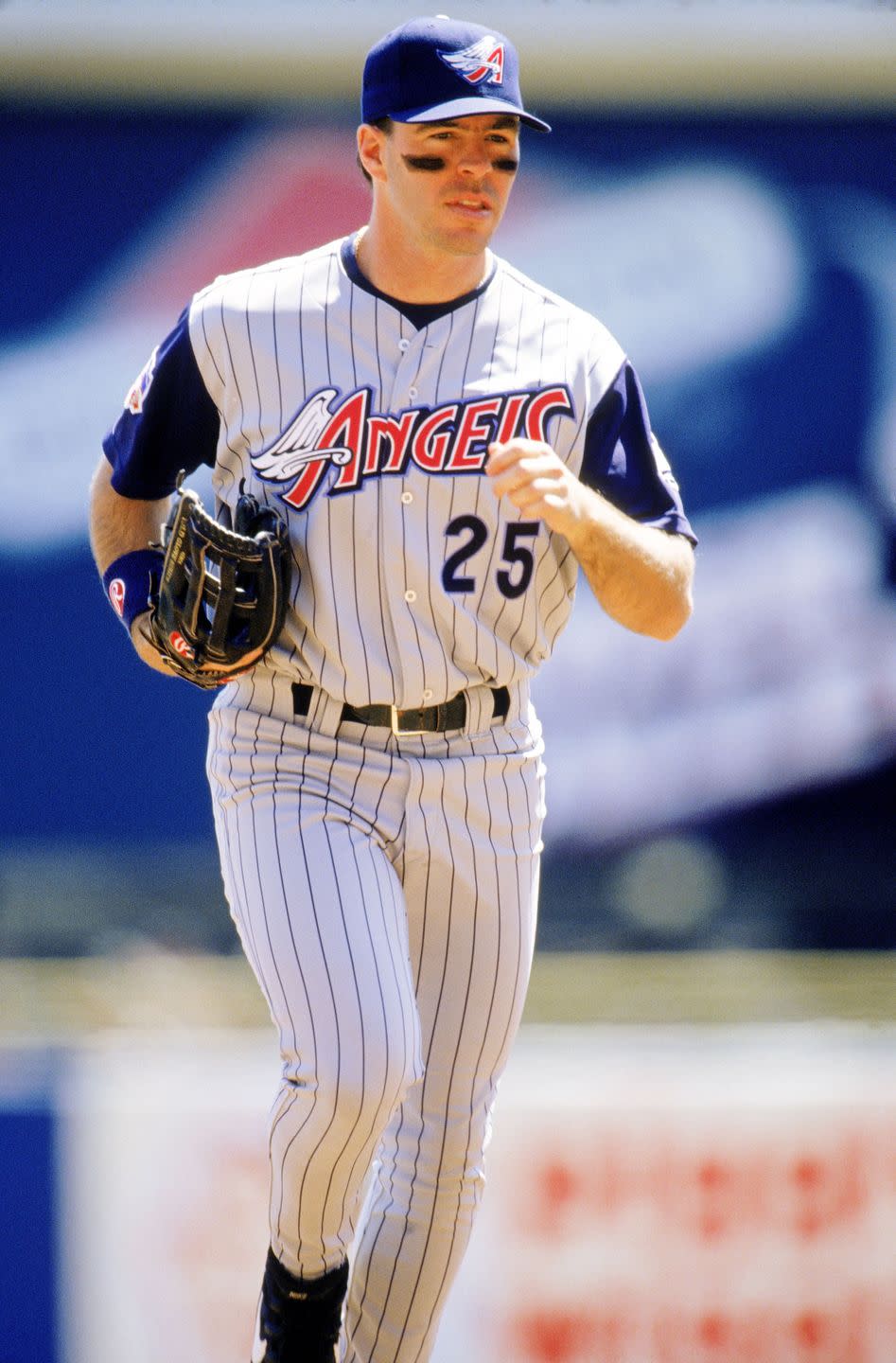
June 10, 1997: Jim Edmunds cemented his reputation as a top-notch defensive centerfielder with this gem of a catch against the Kansas City Royals' David Howard. There were two men on base in the fifth inning of a tie game, so the Angels centerfielder was playing shallow when Howard launched a line drive directly over his head. Edmunds wheeled and ran straight back. Nearing the warning traffic, he extended fully and caught the ball just a few feet from the wall.
"That made Willie Mays' play look routine," veteran ump Dave Phillips told The Kansas City Star. The difference, of course, is Mays was the deciding point in a World Series. Edmunds' catch was, alas, an amazing play in Kansas City.
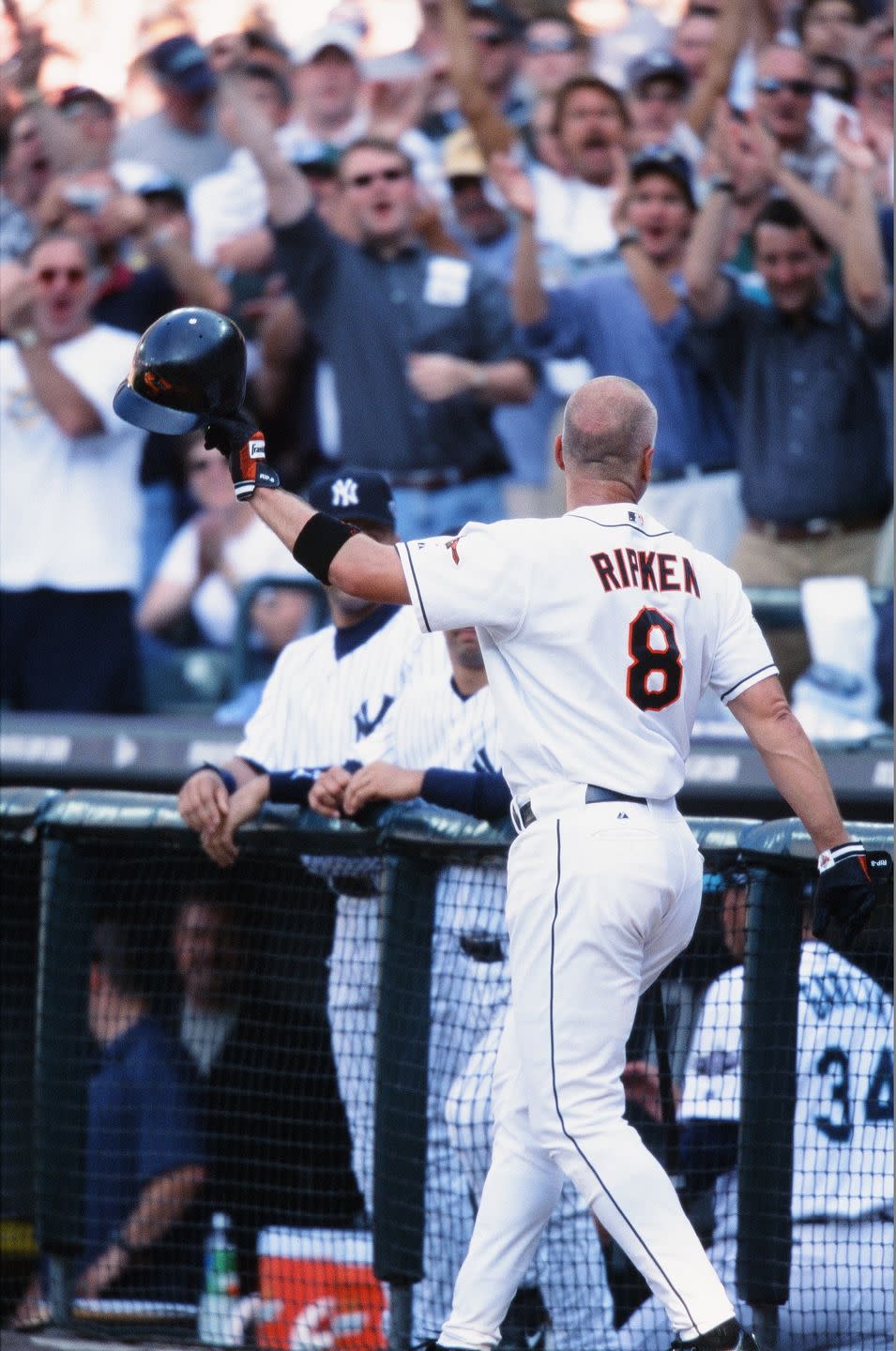
July 10, 2001: In addition to being baseball's all-time Iron Man, Cal Ripken could rise to the occasion. Case in point: He homered in the game he matched Lou Gehrig's 2,131-consecutive-games-played record, and again the next day when he broke it. So it was no surprise that he would deliver a great moment in his final All-Star Game in 2001.
Ripken, a landslide selection to start at third base for the American League, came to the plate in the third inning to the theme from the movie, The Natural. He received a warm ovation, so affectionate and long that he had to step out of the batter's box and acknowledge it.
When he steps back in, Dodgers pitcher Chan Ho Park delivers the first pitch...and Ripken sends it over the fence in left field. He becomes the oldest player (40 years, 10 months, 16 days) to hit a home run in the All-Star Game, eclipsing Stan Musial, and is named the Game's MVP for a record second time.
"As far as special moments go, it doesn't get any better than that," says fellow all-star and 2001 retiree Tony Gwynn.
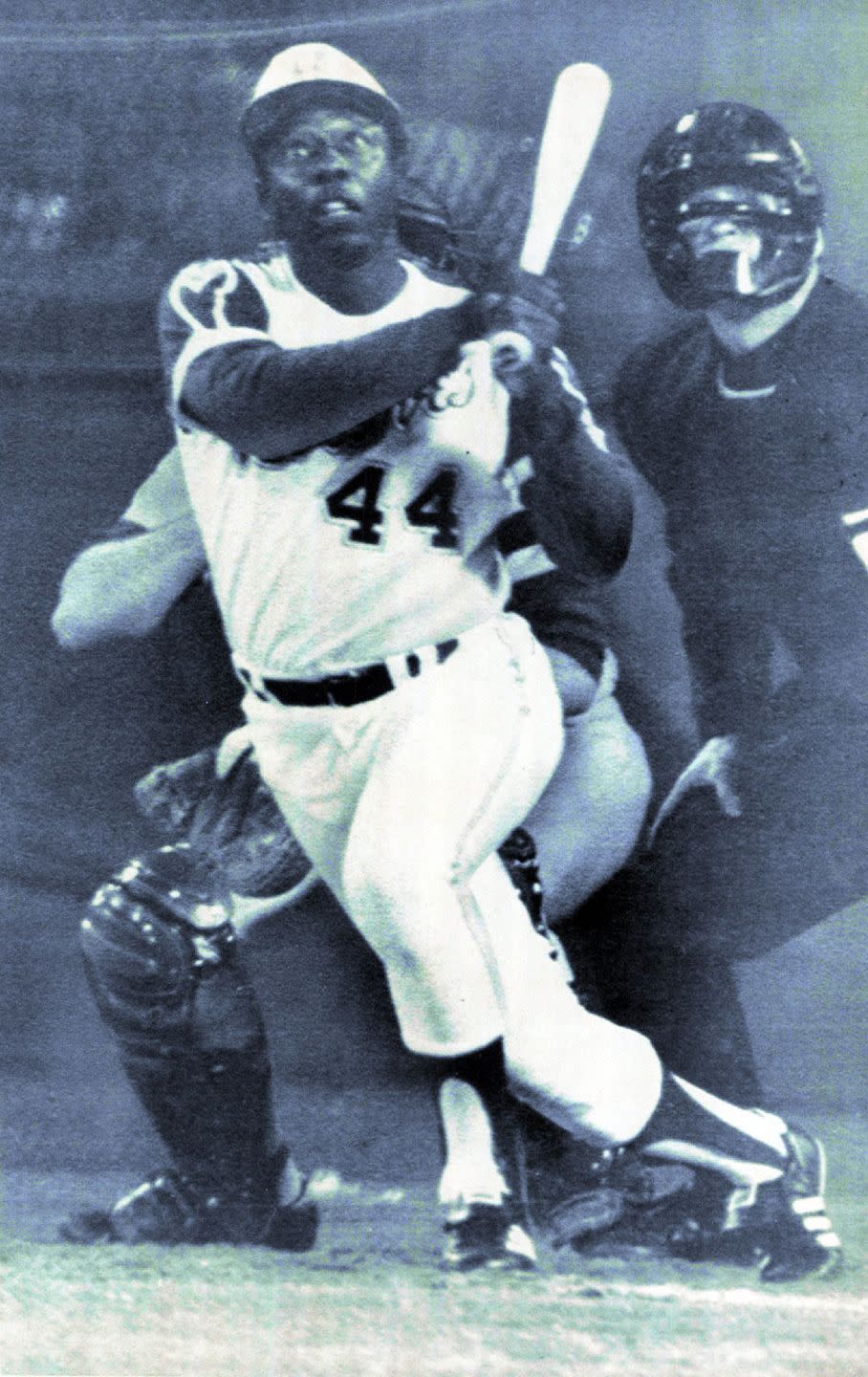
April 8, 1974: Withstanding a relentless torrent of racial abuse and even threats on his life, Henry Aaron hit the 715th home run of his career. In doing so, he broke the record of 714 held for nearly 40 years by Babe Ruth. "It was the most familiar and beloved of all sports records," says Wallace, "and one that Aaron broke in the 21st season of a career characterized by grace and steady, fine play." He never approached Babe Ruth's mark of 60 homers in a season, but blasted more than 30 a spectacular 15 times. Hammerin' Hank would finish his career in 1976, with 755 homers.
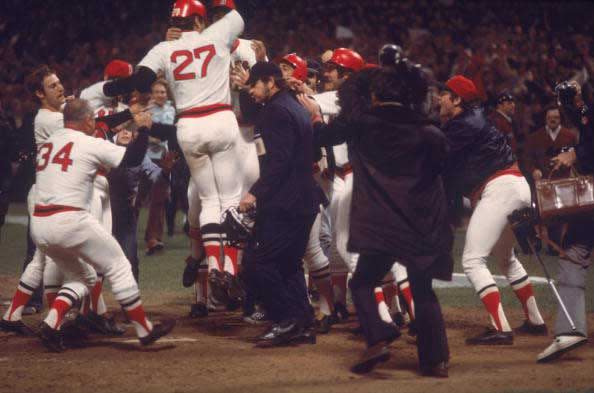
October 21, 1975: In the twelfth inning of Game 6 of the 1975 World Series, Boston catcher Carlton Fisk led off by sending Reds pitcher Pat Darcy's second offering deep to left. There was no question the ball would leave the yard, only on which side of the foul pole. Fisk took three sidestepping leaps toward first base, all the while waving his arms, as if trying to force the ball to stay fair. On the fourth leap, he thrust his fists into the air. "The visual is key there," said Richard Puerzer, a member of the Society for American Baseball Research. "The camera angle that they had showing him waving it fair was something that they didn't usually have."
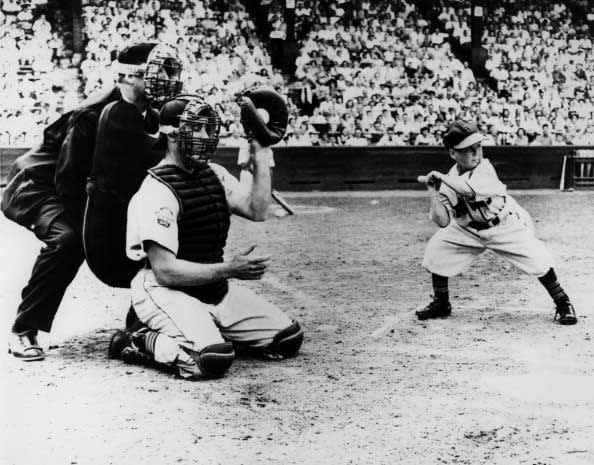
August 19, 1951: Bill Veeck, the St. Louis Browns owner and baseball's greatest promoter, created one of the game's iconic images when he signed 3-foot-7-inch Eddie Gaedel to a contract and sent him to bat as a pinch hitter. "The picture itself is so hilarious," says Lanctot. "Gaedel looks like he's really ready to hit." Gaedel, whose strike zone measured all of one-and-a-half feet, walked on four pitches and twice tipped his cap to the crowd before being lifted for a pinch runner.
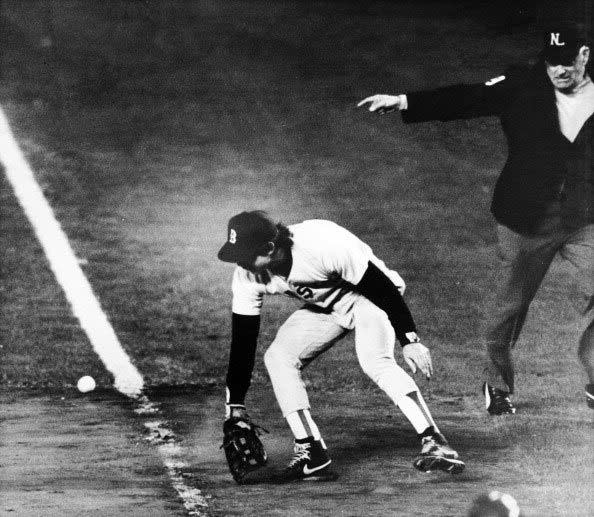
October 25, 1986: Baseball has plenty of heroes, but Red Sox first baseman Bill Buckner's failure to field a routine ground ball in the 1986 World Series unfortunately makes him the one of the game's all-time goats. With a comfortable 5-3 lead in the bottom of the 10th in Game 6 (and a series lead of 3-2), Boston allows the Mets to tie it up. Mookie Wilson's ground ball to first looks like the game will go to the 11th, but Buckner (playing on bad ankles) lets the ball roll between his legs as the winning run scores. It not only propels the Mets to an improbable Game 6 victory, but opens the door for them to win the Series in seven. "It's a shame that Buckner, who was a very fine player for many years, is now remembered for one play," says Thorn.
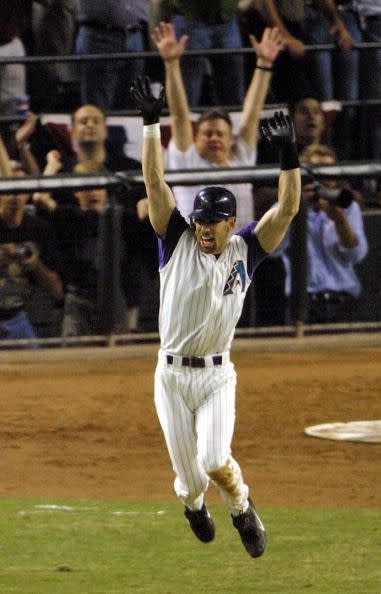
November 4, 2001: Arizona Diamondbacks outfielder Luis Gonzalez hit 57 home runs in 2001, but it was a blooped single behind second base that went down as his most important hit of a memorable year. The single, off Yankees close extraordinaire Mariano Rivera, drove in the winning run in Game 7 of the '01 World Series, among the most dramatic Series ever.
With three games in New York just 7 weeks after the terrorist attacks of Sept. 11, the Series pitted the explosive Yankee offense against Arizona pitchers Curt Schilling and Randy Johnson. The two starters combined for a 1.40 ERA and all four wins, including three by Johnson.
But the final act belonged to Gonzalez.
"He told me later that was like an out-of-body experience," former Diamondbacks GM Joe Garagiola Jr. told the The Denver Post. "It was just like he dreamed as a little boy in Tampa—except he was supposed to be winning the game for the Yankees."
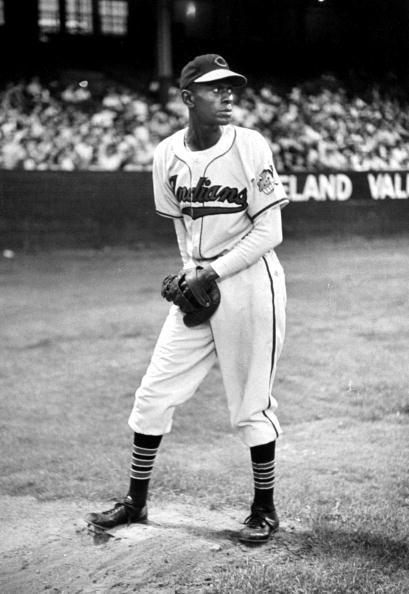
July 9, 1948: Forty-two-year-old Satchel Paige makes his first appearance in the major leagues, a relief stint with the Cleveland Indians. "While Jackie Robinson had broken the color line the year before, Paige represented something else: a Hall-of-Fame-quality pitcher denied his chance on baseball's biggest stage until the very end of his career," says Wallace. At least Paige—who was inducted into the Hall in 1971—got to pitch in the majors; other great Negro League players, including Josh Gibson and Ray Oscar Charleston, never had the chance.
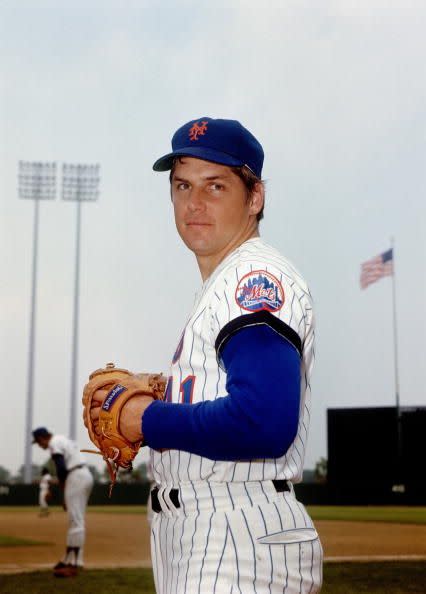
April 22, 1970: Mets' righty Tom Seaver got off to a rocky start by his standards, allowing a run on two hits through the first five innings against the San Diego Padres. With two down in the sixth, he finally found his rhythm. Seaver struck out the final 10 batters he faced. "It's not just that he did it, but that he did it to finish a game when you'd think he would be getting tired," said Puerzer. "He went through the lineup more than once and struck out every single person." Seaver finished the game with 19 strikeouts.
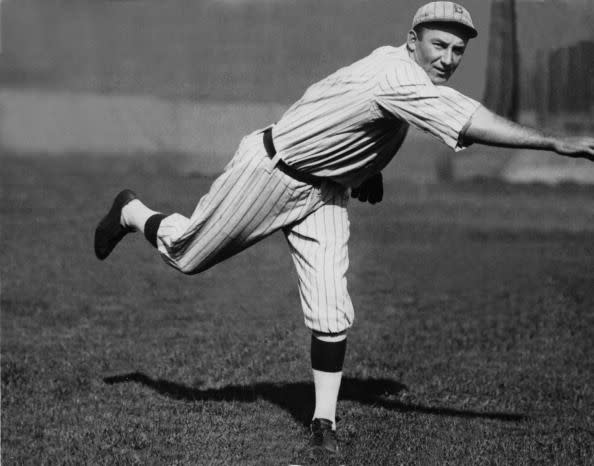
May 1, 1920: The Brooklyn Robins scored a run in the fifth inning, and the Boston Braves matched it in the sixth. Twenty scoreless innings later, the game was called due to darkness—a relief to Brooklyn's Leon Cadore and Boston's Joe Oeschger, both of whom pitched the entire 26 innings. "That's a game that'll never be broken," says Lanctot. "[Cadore] developed a sore arm from that performance and was never the same pitcher." Remarkably, the whole affair—nearly three full games—was over in three hours and 50 minutes.
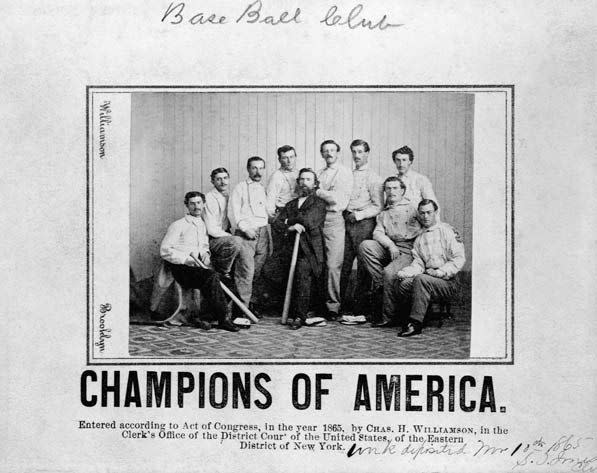
June 14, 1870: The Brooklyn Atlantics pull off the impossible when the team roars back against the Cincinnati Red Stockings in extra innings. When the Reds score two runs in the top of the 11th inning, it appears victory is theirs. But Brooklyn scores three in the bottom frame thanks to a disputed play in which a ball that's hit to right field rolls into the roped-in crowd. Fans may or may not interfere with Reds right fielder Cal McVey while Brooklyn scores the winning run, ending an epic, 84-game winning streak and cementing the Atlantics as the National League's new behemoth. "It is the greatest game ever played,” says Thorn, "because up until that point, the Reds hadn't been defeated in more than two years."
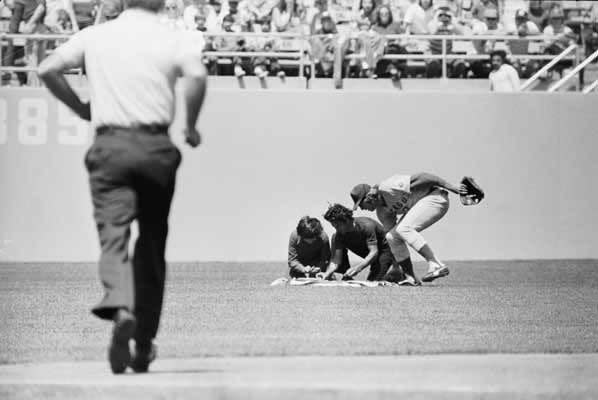
April 25, 1976: Rick Monday was a US Marine for 6 years, which made him uniquely qualified to be patrolling center field for the Chicago Cubs at Dodger Stadium on April 25, 1976.
Monday noticed two protesters in left-centerfield, preparing to burn the American flag. He swooped over and snatched the flag from them.
"I was angry when I saw them start to do something to the flag, and I'm glad that I happened to be geographically close enough to do something about it," Monday told the Washington Post.
Later in 1976, Dodgers exec Al Campanis gave the flag to Monday. He still has it. "I know the people were very pleased to see Monday take the flag away from those guys," Manny Mota, who played with Monday, told the Post. "I know Rick has done a lot of good things as a player and as a person. But what he did for his country, he will be remembered for the rest of his life as an American hero."
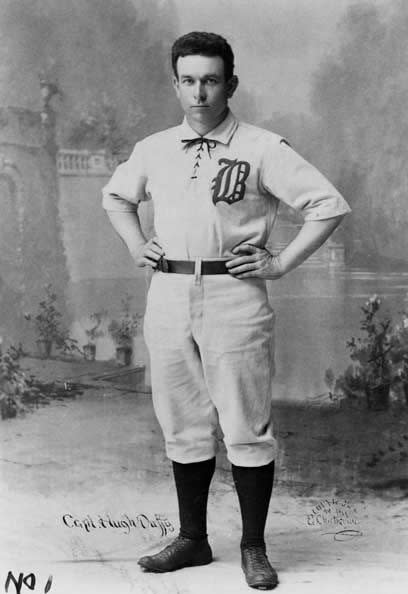
August 6, 1897: Hugh Duffy of the Boston Beaneaters made the greatest catch anyone had ever seen in the (then relatively short) history of baseball. Baltimore pitcher Joe Corbett hit a surprising line drive to left field, and Duffy, playing in, immediately set back and leapt into the air, snagging the ball over his shoulder with his bare hand. He then made a perfect throw home, nipping Baltimore's Joe Quinn, who tried to score from second on a sacrifice fly. "Everyone comments on how great Willie Mays' catch was, but people have forgotten all about Duffy, who made an incredibly similar play," says Thorn.
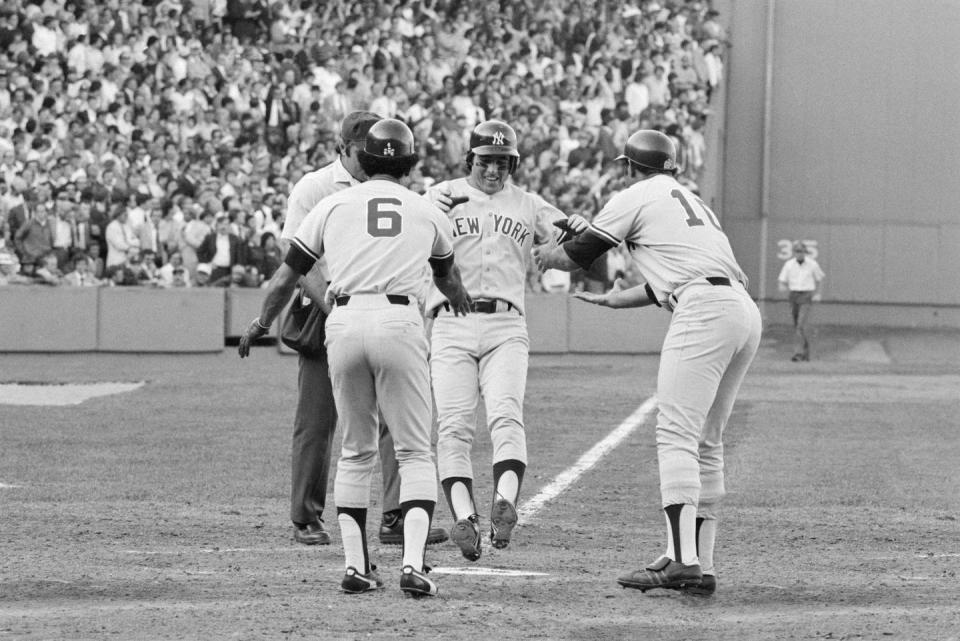
October 2, 1978: The Yankees and Red Sox both finished the season 99-63, and the American League East came down to a one-game playoff. Boston held a 2-0 lead heading into the seventh inning when, with two men on, light-hitting Yankees shortstop Bucky Dent smacked a Mike Torrez pitch over Fenway's Green Monster. "Baseball is very democratic," says Puerzer. "It allows for superstars to do a whole lot, but it also allows for guys like Bucky Dent to do something." The Yankees took a 3-2 lead, ultimately winning the game, 5-4. They went on to win the World Series over the Dodgers in six games.
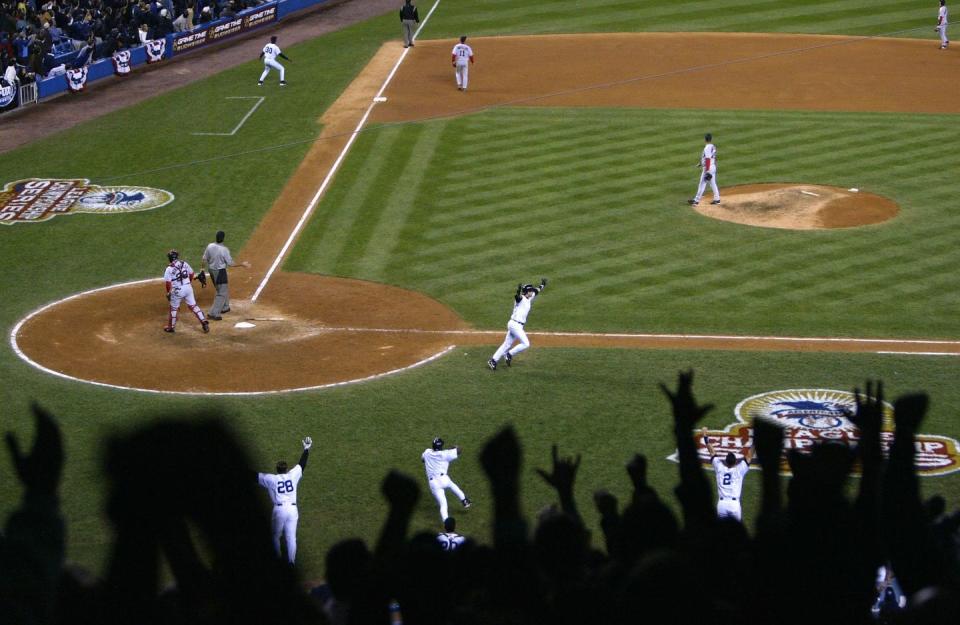
October 16, 2003: Aaron Boone didn't start Game 7 of the 2003 American League Championship Series—but he ended it. Inserted as a pinch runner in the eighth inning of a tie game, Boone led off the bottom of the 11th inning against Boston knuckleballer Tim Wakefield. Mired in a deep slump (2-for-16 in the series so far), Boone debated whether to take the first pitch, to get a look at Wakefield's jittery stuff before taking a swing at it. Wakefield did indeed start Boone with a knuckler…and Boone swung. Play-by-play man Charlie Steiner calls it like this:
There's a fly ball, deep to left! It's on its way! There it goes! And the Yankees are going to the World Series!
Kevin Millar was a member of that '03 Sox team and he remembers the moment well, if not fondly. "Walking off the field in 2003 with that feeling in your stomach, it doesn't get worse than that," says Millar, now an MLB analyst. "But this is history."
History indeed. The homer is so big that it takes a place among the biggest in the Yankees' storied history, right up with those by Chris Chambliss (1976 ALCS) and Reggie Jackson (1978 WS). It even has its own Facebook page.
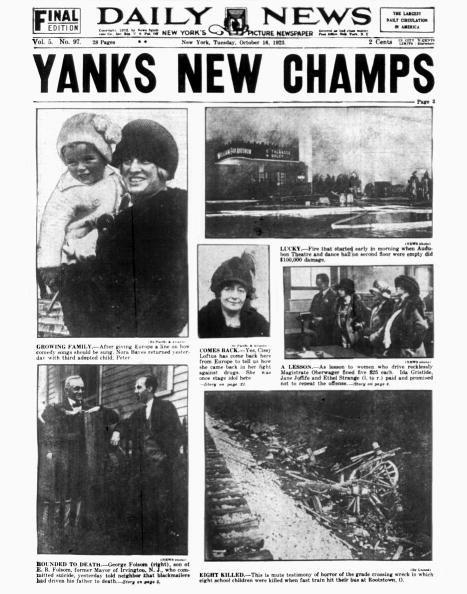
October 15, 1923: Culminating the spectacular opening season of The House that Ruth Built, the New York Yankees captured their first-ever World Series with a 6-4 victory over their arch-rivals, the New York Giants. "With his usual perfect timing, Babe Ruth slugged a home run, capping off a great Series in which he hit .368 with three round-trippers and eight RBI," Wallace says. A first championship under their belts, the Yankees would go on to win 27 more and counting.
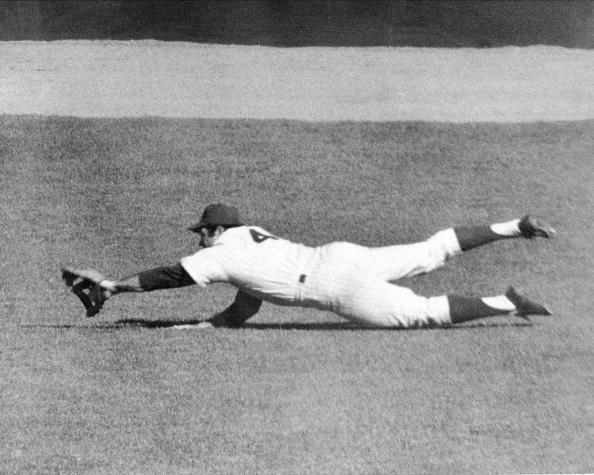
October 15, 1969: Ron Swoboda, a weak outfielder with limited range, helped his Miracle Mets win Game 4 of the 1969 World Series thanks to a magnificent catch. "It's the single greatest play I've ever seen," says Thorn. In the top of the ninth inning, Orioles slugger Brooks Robinson hits a sinking line drive to right field. Swoboda could have badly misplayed it to give the Orioles the lead, but instead he makes the diving catch, rolls over, pops up, and throws home to keep the game tied. "This is such an implausible candidate for a great catch, and the situation is such that by preserving the tie, he permitted the Mets to go into extra innings and win," Thorn says.
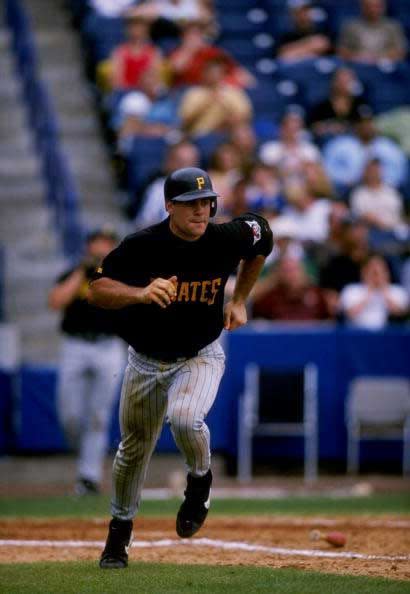
April 24, 1998: Pittsburgh's Jason Kendall is on third base in the sixth inning. When Turner Ward slaps a grounder wide of first, the Padres' Mark Sweeney fields it and Kendall races home. Sweeney's throw to catcher Carlos Hernandez has Kendall beat easily, but it's way off line. The Pirates catcher dives up the third base line and flies into home plate. Safe! "Part slide, part leap, part airborne flight, part acrobatic moment," says Frommer. "Kendall's feat is just all fabulous."
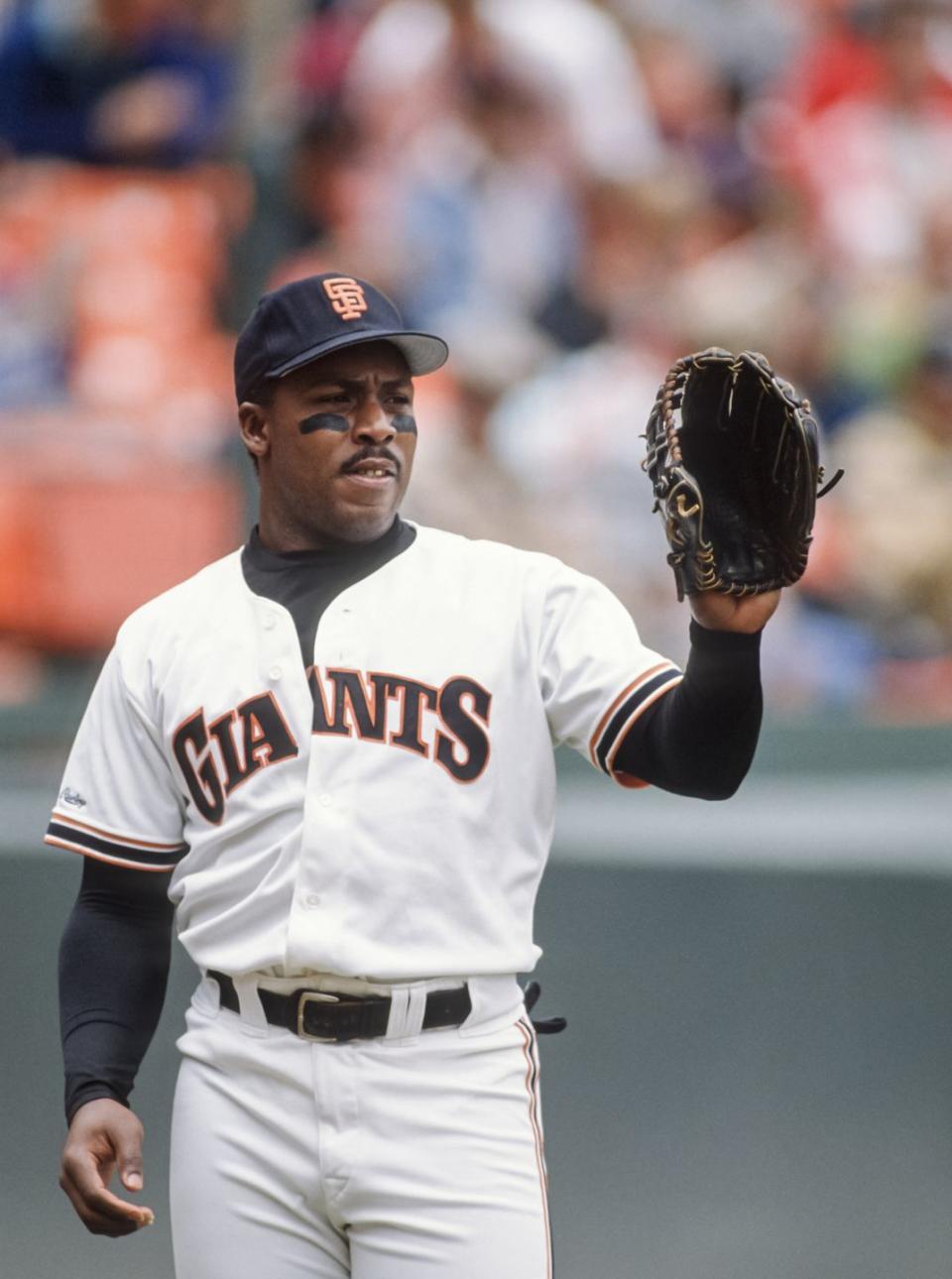
April 26, 1989: Kevin Mitchell was a talented baseball player with a gift for the unexpected. It all came together for "Mitch" in 1989, when he was named National League MVP—and made one of the wildest catches in baseball history.
Here's the scene: Mitchell's in left field at Busch Stadium when the Cardinals' Ozzie Smith hits a tailing fly ball toward the left-field line. Mitchell runs hard—too hard, in fact. He overruns the fly ball, realizes it, and reaches back with his right hand—the one without a glove—to make a crazy, over-the-head catch.
Mitchell's explanation: "I was running as hard as I could, and it just came back on me. All I could do was stick up my hand and there it was."
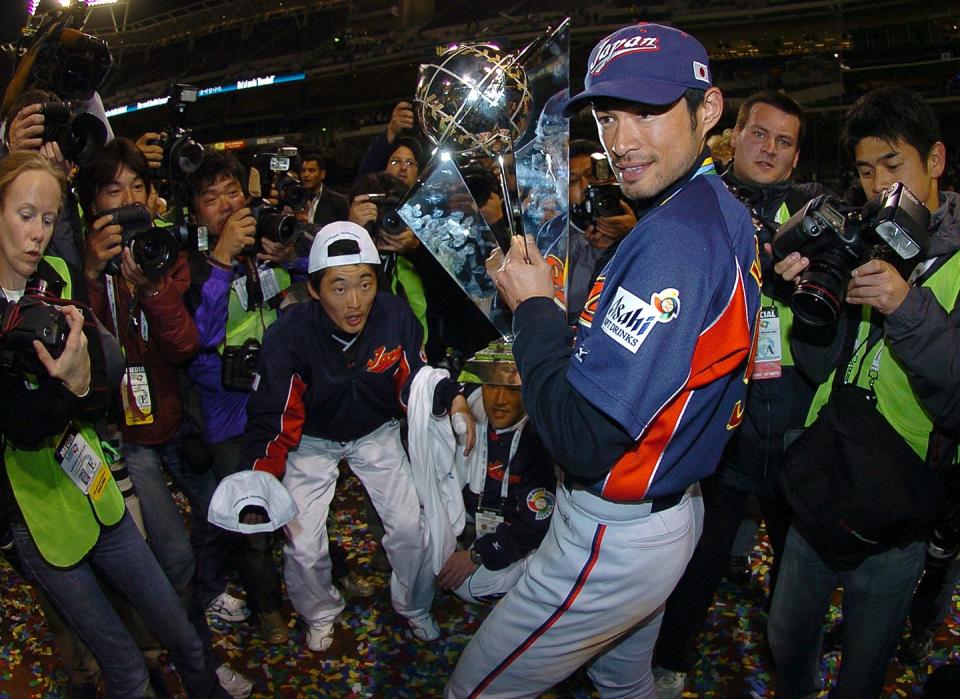
March 20, 2006: Led by Ichiro Suzuki and Daisuke Matsuzaka, Japan defeated Cuba, 10-6, in PETCO Park in San Diego, to capture the championship of the inaugural World Baseball Classic. The Classic, sanctioned by Major League Baseball and international organizations, was the first truly global baseball tournament involving major-league players, featuring teams from Mexico, South Korea, the Dominican Republic, and other countries. Despite boasting such players as Derek Jeter and Ken Griffey Jr., the U.S. team finished eighth. "In 2009, in the second Classic, Japan successfully defended its title, while the U.S. finished fourth," says Wallace. "It may be America's Pastime, but baseball is now clearly an international game."
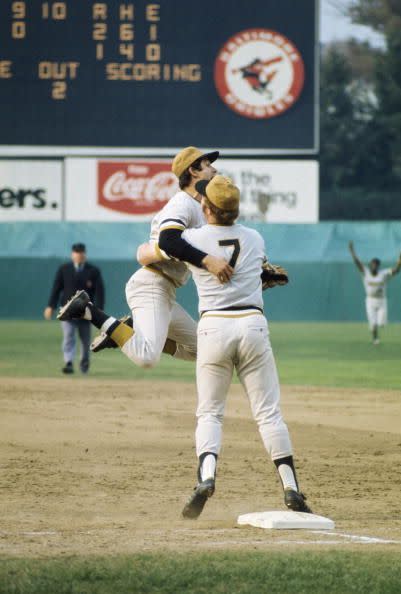
October 17, 1971: Like every other 8-year-old kid, Steve Blass dreamed of how he'd react after recording the final out of a World Series. In Game 7 of the 1971 Fall Classic, he found out. The Pirates pitcher allowed one run against the Orioles in his second complete-game victory of the series. When Merv Rettenmund grounded out to end the game, Blass leapt into the air, dashed toward first base and hugged first baseman Bob Robertson. "There are certain end-of-World Series images that come to mind," said Puerzer. "It's an occupation for these guys, but it's also something they can be so joyful about." As Blass put it, "You just react. It's raw nerve. It's absolutely pure, and it stays pure the rest of your life."
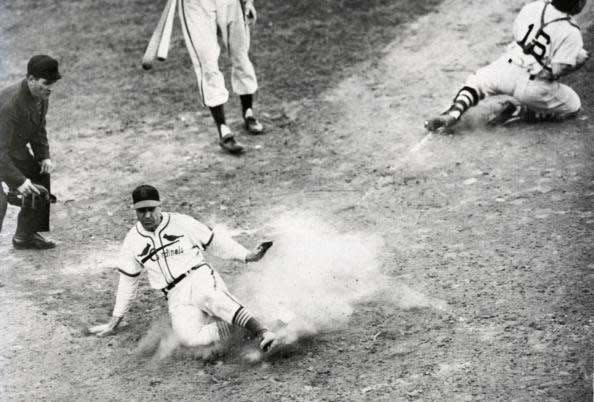
October 15, 1946: It's Game 7 of the '46 World Series, the bottom of the eighth inning, and the Cardinals and Red Sox are all tied up at 3 a piece. The Redbirds' Enos "Country" Slaughter singles, but is left waiting at first after the next two Cardinals strike out. With one last chance, Harry "the Hat" Walker strokes the ball over shortstop into left centerfield, and Slaughter takes off with the crack of the bat. Sox shortstop Johnny Pesky catches the relay from outfield and sails the ball home. Running through the stop sign by his third-base coach in what becomes known as the "Mad Dash Home," Slaughter scores the game's winning run, giving St. Louis the world championship. "Maybe if I had a better arm, I would have gotten him, but in my heart, I know I didn't hold the ball," Pesky told Frommer.
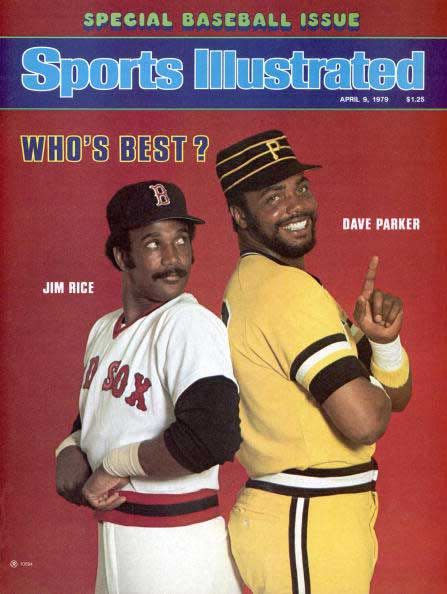
July 17, 1979: The 1979 All-Star Game was tied in the bottom of the eighth inning. The Angels' Brian Downing represented the go-ahead run on second base, and headed for home when the Yankees' Greg Nettles roped a single to right field. In one swift, fluid motion, Pirates right fielder Dave Parker scooped up the ball and fired it home. The throw arrived at the same time as Downing, but was so perfectly placed that catcher Gary Carter didn't have to move to apply the tag. "To watch a guy do what seemed to me impossible, and make that throw to a guy without him having to move is amazing," said Puerzer. "Skill, beauty, everything."
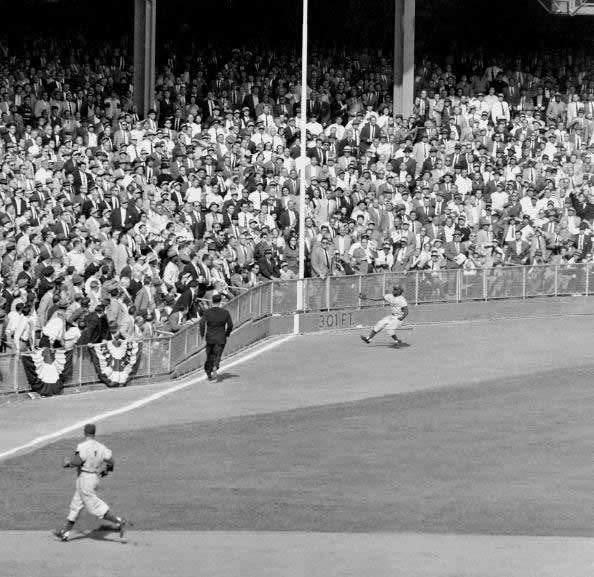
October 4, 1955: In the decisive Game 7 of the '55 Fall Classic, a speedy little outfielder named Sandy Amoros helps his Dodgers win the title—and gives a legendary Yankees catcher fits in the process. The Dodgers, holding a 2-0 lead over the Yanks, send Amoros into left field in the sixth inning. With runners on first and second, Yogi Berra slices a line drive down the left-field line, confident that he pulled it enough to tie the game. But Amoros streaks across the outfield, grabs the ball with his right arm fully extended, and fires it into the infield to double up Berra and Gil McDougald. "That was the exclamation point for the Dodgers, who went on to win their first and only world championship in Brooklyn," says Frommer.
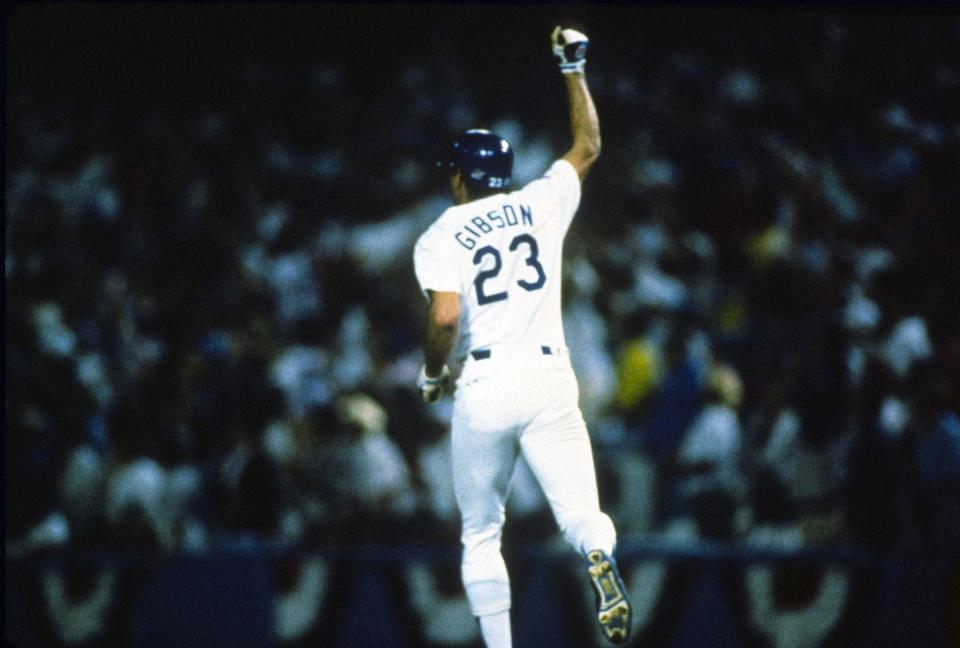
October 15, 1988: Bobby Thompson, Bill Mazeroski, and Kirk Gibson. That's the short list for most dramatic postseason homers ever, and Gibson's pinch-hit poke—with a bad wheel, against an unhittable Dennis Eckersley, with the Dodgers a run down in the ninth to the heavily favored A's in Game 1 of the World Series—may be the most electric ever.
Before Gibson could have the signature moment of his notable career, he had to battle from two strikes down to a full count, and his dribbler up the first-base line stayed just foul. Finally, though, Eckersley, who had thrown nothing but fastballs to the ailing Gibson, made the biggest mistake of his career.
"I was tired of throwing fastballs, so I thought to myself, if I give him something off-speed, maybe he'll pull it off," Eck told ESPN in 2008. “It was really stupid, because something off-speed is probably the only thing he can get to at this point.”
Gibson was waiting on the backdoor slider and rocked it 400 feet, over the right-field fence. The Dodgers won Game 1 and took the Series in five games. Eckersley and the A's would win the earthquake-interrupted '89 Series, against the Giants. But this moment belonged to Los Angeles.
"When Gibson hit that home run, I jumped up onto my mom's coffee table and broke it," remembers Millar. "Growing up in L.A. as a Dodger fan, this was a tremendous moment."
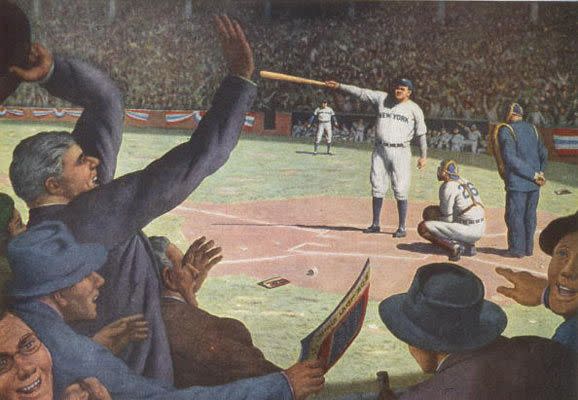
September 28, 1932: Did Babe Ruth predict his home run in Game 3 of the 1932 World Series? "No one knows if he was pointing at the dugout or at the flagpole,” said Lanctot. We know that Ruth didn't majestically point to the fence, as seen in a pair of campy Hollywood biopics. We also know that Ruth played along with the Chicago fans' and players' heckling, holding up one finger after the first called strike and two after the second. "It only takes one to hit it," he is reported to have said.
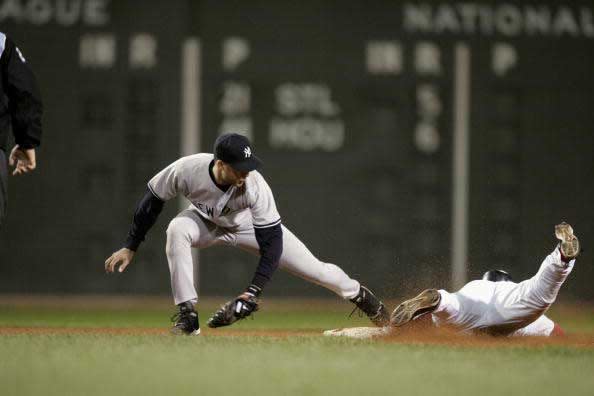
October 17, 2004: The greatest comeback in baseball history started not with a bang, but a whimper—a ninth-inning walk to Boston's Kevin Millar against Yankees' all-timer Mariano Rivera in the fourth game of the American League Championship Series. It gained life, though, when pinch runner Dave Roberts audaciously stole second base. Bill Mueller's ground ball single tied the game, and the Red Sox would never look back. Their 12-inning victory staved off elimination, and set the Sox on an eight-game win streak and the team's first championship since 1918. "Obviously being on that 2004 team leaves me with some great memories and this one really gave us momentum all the way through Game 7,"Millar says,
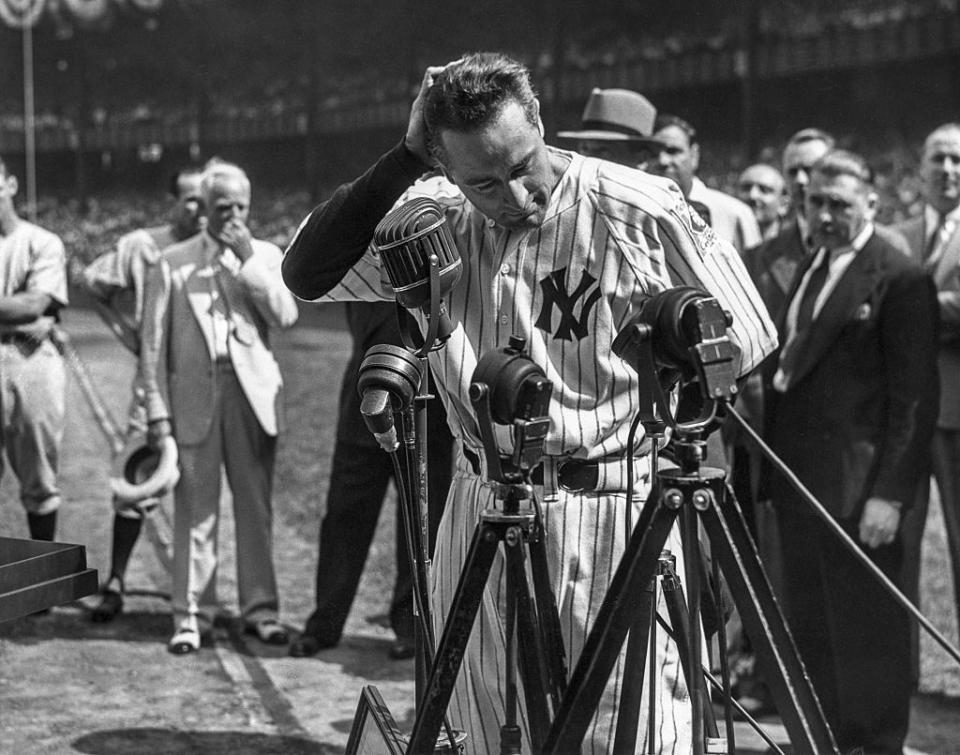
July 4, 1939: The New York Yankees honored their terminally ill team captain with Lou Gehrig Day at Yankee Stadium. Between games of an Independence Day doubleheader, speakers showered Gehrig with praise and gifts, and the club retired his No. 4. By the time Gehrig himself was done speaking, there wasn't a dry eye in the house. "The 'Luckiest Man' speech remains as likely the greatest speech ever given by an athlete," says Puerzer.
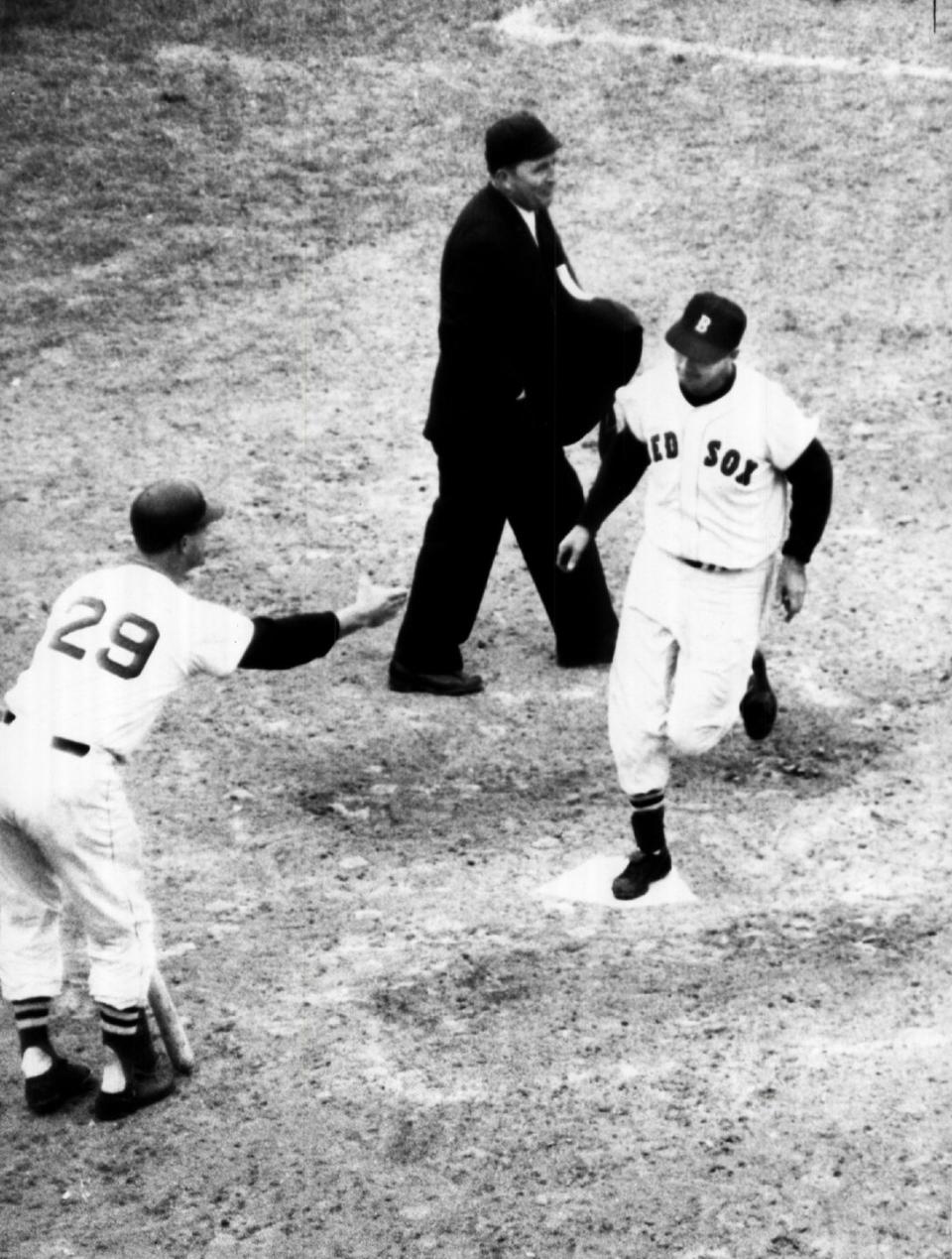
September 28, 1960: On the chilly, overcast final day of the Red Sox's last home stand of the 1960 season, Ted Williams steps up to the plate for the third time in the game—and for the very last time in his career. Glaring at Orioles pitcher Jack Fisher, Williams smashes a long drive to deep right field. It's homer No. 521 for the Splendid Splinter, and the culmination of a brilliant career. He runs into the Boston dugout in the top of the ninth inning, much to the chagrin of fans screaming, "We want Ted!" "Maybe I should have come out, but I couldn't. It just wouldn't have been me," Williams told Frommer.
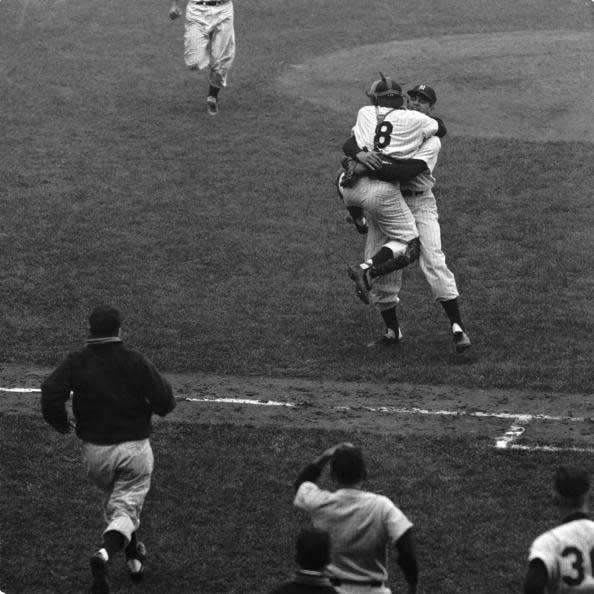
October 8, 1956: The 25th and 26th Dodgers to bat in Game 5 of the World Series are retired in order: Carl Furillo flies out to right field, and Roy Campanella grounds out to second base. But it's the 27th batter, pinch-hitter Dale Mitchell, whose final whiff makes history. The image of Yankee righthander Don Larsen casually tossing the ball from a no-stretch windup to catcher Yogi Berra to strike out Mitchell and complete the first and only perfect game in World Series history is one of baseball's most-enduring images. And the rest of the game is just as magical: "It all blends together—the autumn shadows, smoke and haze at Yankee Stadium, and zeroes for the Dodgers inning after inning," says Frommer.
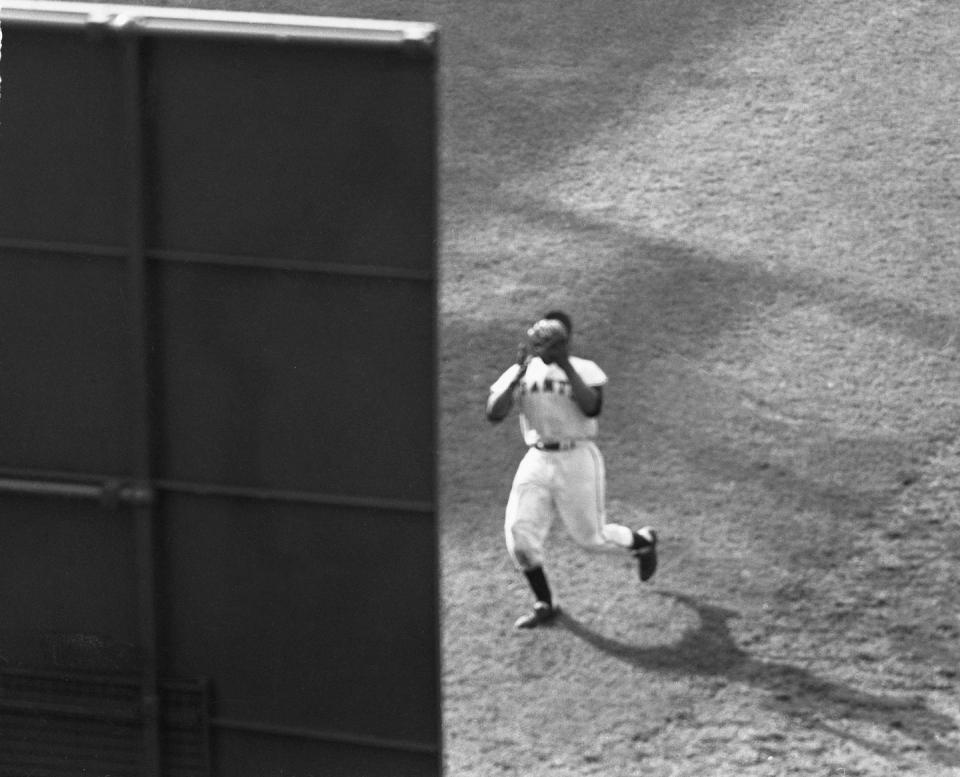
September 29, 1954: With the first game of the '54 World Series on the line, star Giants outfielder Willie Mays makes perhaps the most iconic catch in baseball history. In the eighth inning with two runners on base, the Indians' Vic Wertz pokes a ball to center. Mays races to the wall and gathers in the 450-foot fly. Then, with his back turned to home plate, Mays whirls and fires the ball to the infield. His cap comes off, his body spins, and Mays falls flat on his belly. "It's a sensational play that ended up saving two runs and giving the Giants enough momentum to win their first World Series since 1933," says Frommer.
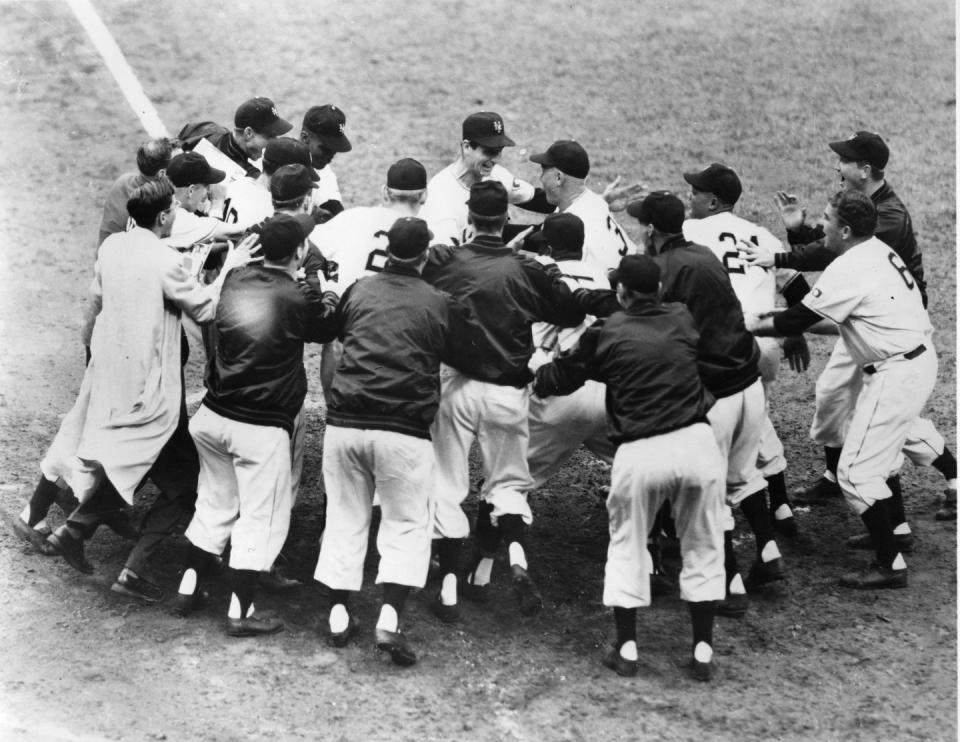
October 3, 1951: In the most famous single event in all of baseball history, Bobby Thomson completes the New York Giants' improbable capture of the National League Pennant with his game-winning homer in the third and last game of the 1951 NL Playoffs. Thomson's miraculous three-run bomb culminates the Giants' scorching 37-7 run after being 13 1/2 games out of first place in their division in August—the greatest reversal of fortune of all time. "But it also marks the ultimate turnabout in baseball history," says Thorn. "The Brooklyn Dodgers not only lost the pennant, but lost it crushingly with one out in the bottom of the ninth of the final playoff game." The shot is particularly enduring because of Giants radio announcer Russ Hodges' jubilant call: "The Giants win the pennant! The Giants win the pennant!"
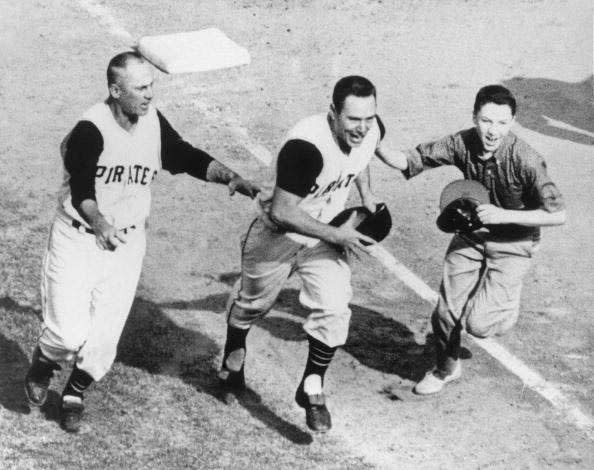
October 13, 1960: Pirates second baseman Bill Mazeroski hits the first World Series-winning homer in baseball history, providing a thrilling conclusion to one of the greatest games ever played. Having been outscored by the Yanks in the previous six games by a combined score of 46-17 and surrendering their 9-7 lead in Game 7, the Pirates send Mazeroski to lead off the bottom of the ninth against pitcher Ralph Terry. Maz swings away and smashes the ball over the leftfield wall, propelling the underdog Bucs to victory. "It culminates a storybook World Series win by the Pirates," says Thorn.
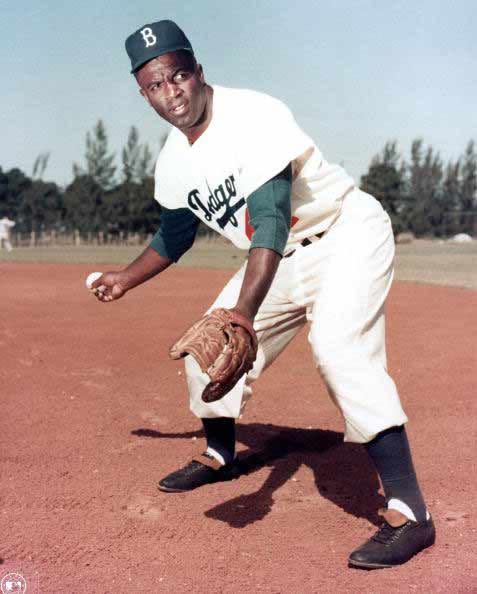
April 15, 1947: Branch Rickey was a baseball innovator. He invented the batting helmet. He created the first farm system. But his best work was the co-venture he undertook with a young Negro League infielder named Jackie Robinson. After a year in the minor leagues, Robinson debuted with the Brooklyn Dodgers. "Culturally, that's far and away the most important moment in baseball," says Puerzer. "Branch Rickey designed the opportunity for Robinson to make it as successful as possible. When you look at a lot of the guys who came after Robinson, nobody else had the personality to be able to be first."
There's a reason it's America's favorite pastime.

